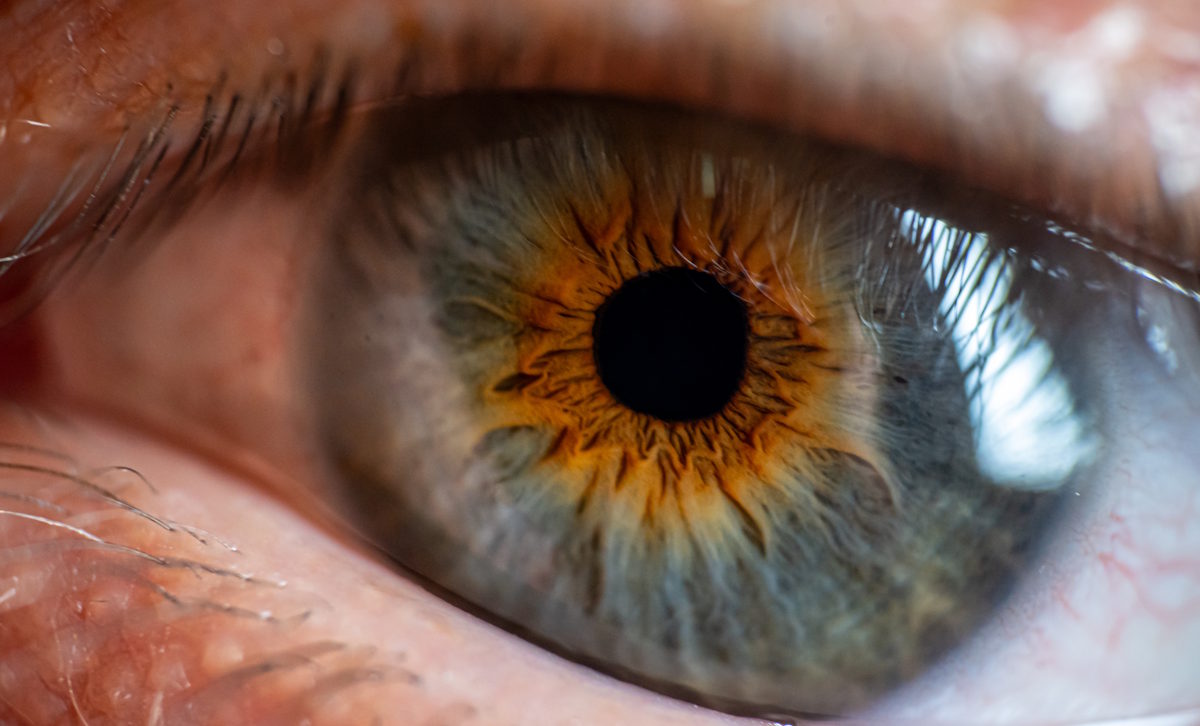Over the years we’ve learned just how much our microscopic strands of DNA make us who we are. Also known as genes, these tiny conduits of hereditary information influence everything from height and hair colour to diseases, personality, and even intellectual ability.
It’s no surprise that our eyes are heavily reliant on the genes of our parents as well. In this article, we’re highlighting the different ways our eyes are impacted by genetics, including colour, vision issues, and certain conditions.
Eye Colour

Our eye colour is indicated by the iris, the coloured part of our eye surrounding the pupil. The colour of our eyes is passed down from genetics, but there isn’t just one gene for eye colour – it’s estimated that over 100 genes can influence eye colour.
Melanin plays a key role in influencing eye colour. Produced by special cells called melanocytes, melanin is more well known for determining skin tone and protecting from UV radiation. But it also determines how dark our eyes will be. Someone with blue eyes has less melanin, while someone with dark brown eyes has more melanin.
There are a few notable genes involved in the determination of eye colour.
- OCA2 is a gene that is vital in the production of the P protein, which allows us to store melanin. Therefore, it is the OCA2 gene that plays a part in how much melanin is retained in our eyes.
- The HERC2 gene also plays a part, which is known to mutate and reduce the expression of its OCA2 neighbour.
- SLC24A4 is partly responsible for melanin production, and more so in control of whether eyes are blue vs. green.
- The TYR gene encodes an enzyme called tyrosinase, which plays a vital role in melanin synthesis. Mutations in this gene can lead to conditions like albinism.
Vision Issues

As we age and live our lives, environmental factors and lifestyle can determine the vision issues we encounter or avoid. But our genetics play a part as well. And interestingly, our genetics can interact with environmental factors to influence the development and severity of certain issues.
Here are some of the common refractive errors, or vision issues, passed down via genetics:
- Also known as nearsightedness, myopia is heavily influenced by our parents. If both parents are myopic, there is a greater chance that the child will develop Myopia at some point as well. This vision can then be exaggerated by environmental factors such as working conditions.
- Hyperopia is the opposite of Myopia, or farsightedness. There isn’t a specific gene that affects hyperopia, but variations in genes can play a part in the eyeball’s length and therefore the susceptibility of hyperopia to occur.
- Presbyopia refers to the loss of near vision brought on by the natural aging process. Your genetics can influence how early this occurs along with how severely.
Eye Diseases

Our genetics are tightly woven into the development of eye diseases. For example, the mutation of a single gene can cause a blip in the cellular development process, resulting in an eye condition or vision loss.
Here’s a look at some of the eye conditions that can be influenced and determined by genetics:
Glaucoma
Glaucoma is a disease of the optic nerve that causes fluid buildup and vision loss. The disease can be passed from a single gene or a more complex combination of genes and environmental factors, which can result in adult-onset Glaucoma.
Macular Degeneration
Age-related Macular Degeneration (AMD) results in blurred or lack of vision at the centre of the visual field. AMD often runs in the family, and is more easily passed on if a parent has it. Variations in genes like CFH and ARMS2/HTRA1 have a stronger ability to increase the risk of AMD.
Cataracts
Cataracts cause cloudy areas in the lens, and are quite common among older people. Age-related cataracts can develop from genes or environmental factors, while congenital cataracts often occurring in babies or young kids is often inherited from the parents.
Strabismus
Strabismus is a disorder usually found in children that affects the alignment of the eyes, due to each being pointed in different directions. While not all cases follow simple inheritance patterns, Strabismus tends to run in the family.
Amblyopia
Also known as lazy eye, Amblyopia is a condition where one eye doesn’t develop regular vision during childhood. A family history of problems increase the chance of Strabismus, but inheriting a genetic predisposition does not guarantee a child will have the condition.
Leber Hereditary Optic Neuropathy
Leber Hereditary Optic Neuropathy (LHON) is a rare vision loss condition that’s caused by mitochondrial DNA mutations and passed down from the mother.
Retinitis Pigmentosa
Retinitis Pigmentosa is a rare group of diseases that create trouble seeing at night and worsening peripheral vision. This genetic mutation can be passed down from parents, along with the severity and progression of the condition.
Early diagnosis is vital in detecting genetic eye diseases and conditions, which opens the door for effective management, treatment, and retention of vision. Early detection is your best defence – the earlier the better.
That’s why it’s crucial to keep up with your visits to the optometrist for eye exams, and especially important to bring your kids in twice a year. Many conditions develop in children, which can be treated or avoided altogether if caught early enough.
Book an appointment at one of Inner Harbour Optometry’s two downtown locations today.
